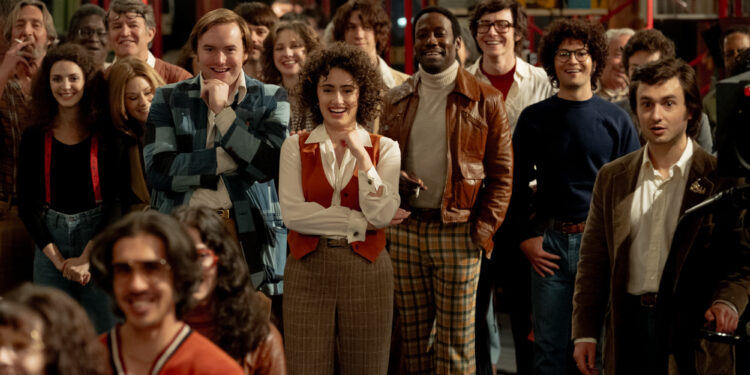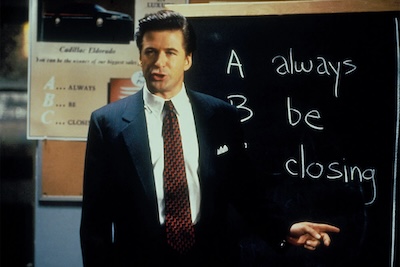Jason Reitman’s Saturday Night is a love letter to the counterculture minds that formed one of the longest running television series in history, Saturday Night Live. Reitman creates a deliberately, lovingly chaotic atmosphere packed with visual gags, nostalgic references, sounds, and iconic music that all collaborates to orient the audience in a very specific place and time. That’s Saturday, October 11, 1975.
But where exactly does music fit in all of that audio chaos? That’s where music editor Chris Newlin comes in to make sense of it all.
“We obviously have lots of characters talking over each other and chaos on screen, and I think a big part of that was finding ways for all these things to come together and work. That’s a combination of what I prep on the music side, what dialogue preps on their side, and what Lee [Gilmore] and the sound effects team preps on their side,” Newlin shared. “The music, as minimal as it is, is pretty wide and fills the room. So, it feels like a character in the film, but it allows for the dialogue in front of the screen to do its thing.”
Saturday Night explores the roughly 90 minutes leading up to the first episode. In those tumultuous minutes, literally anything and everything does go wrong. Throughout the chaos and mania, we are presented with representations of that first episode’s musical guests: Billy Preston (Jon Batiste, who also provided Newlin a surprise live score recorded on set) and Janis Ian (Naomi McPherson). Those two performances were specifically scripted by Reitman and co-writer Gil Kenan, and Batiste’s performance of “Nothing From Nothing” is a recurring highlight of the film.
But as the plot progresses, show producer Lorne Michaels (Gabriel LaBelle) finds that the studio audio equipment doesn’t meet his standards. He imagines a scenario where the at-home audience feels as if they’re sitting directly in a Billy Preston concert, but the single microphone won’t deliver that experience.
When the Saturday Night set was originally constructed, Newlin explained that all of the amps and other equipment were fitted with microphones to catch the required modern-sounding soundtrack. But they quickly realized they needed to cool things down a bit sonically. Eventually, though, the montage featuring “Nothing From Nothing” that takes place near the end of the film balances things out, sending the audience home on a very high note.
“By the time you get to this ‘Nothing From Nothing’ montage, you just want to bask in the joy of everything coming together. You’re like, oh, this might actually work,” Newlin laughed. “Then, we have a nice little moment of tension leading up right before, but I think without that montage sequence and the music and the fun of that scene, essentially, you would just feel anxiety the entire time.”
Newlin also worked with Reitman to find international music that boasts the flavor of New York City in the mid-1970s. So, after breaking down all of the music moments within the film, I immediately wanted to rewatch the film (a third time) to see what I missed.
“It’s enjoyable to watch, even though it’s chaotic and stressful at times. It’s a lot happening, but we’re trying to sculpt what is important. You can’t catch everything, but you didn’t necessarily need to catch everything. I think that was some of the intentions sometimes. I think it also lends for a great rewatchability because there are so many people talking back and forth where you can come in and rewatch the film,” Newlin explained. “[There are] fun little Easter egg for SNL fans and things like that. My goal was just to try to support that story-wise and stay out of the way sonically but still feeling like we’re driving things forward.”
Hear more from my full interview with Saturday Night music editor Chris Newlin below!
Podcast: Play in new window | Download
Saturday Night is now in theaters and is available to buy or rent online.










![‘Pirates! The Penzance Musical’ Breakout Star Nicholas Barasch Discusses Performing On The Tonys With Seven Stitches On His Face [VIDEO]](https://thecontending.com/wp-content/uploads/2025/06/Pirates0011r-120x86.jpg)